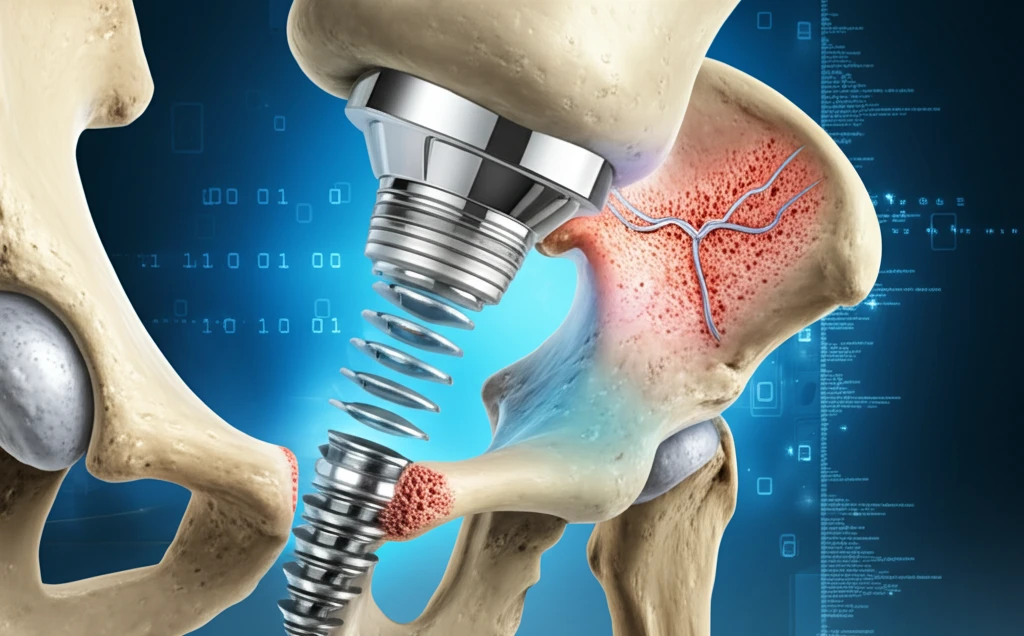
Is Hydroxyapatite the Secret to Longer-Lasting Hip Replacements? A 10-Year Study
"Discover how hydroxyapatite coatings can significantly improve the longevity and success of total hip replacements, even with technical imperfections."
For individuals grappling with debilitating hip pain, total hip replacement (THR) offers a beacon of hope, restoring mobility and improving quality of life. The success of THR hinges on the implant's ability to integrate seamlessly with the surrounding bone, ensuring long-term stability and function. Hydroxyapatite (HA) coatings have emerged as a promising solution to enhance this integration.
Hydroxyapatite is a naturally occurring mineral that forms the primary component of bone. Applying an HA coating to hip implants mimics the natural bone structure, encouraging direct bone growth onto the implant surface. This process, known as osseointegration, leads to a stronger, more stable bond between the implant and the bone, potentially extending the lifespan of the hip replacement.
In 2010, a team of researchers published a compelling 10-year study assessing the long-term outcomes of total hip replacements using a fully hydroxyapatite-coated stem and socket. This study offers valuable insights into the effectiveness of HA coatings in promoting implant fixation, reducing complications, and improving overall patient outcomes. Let's delve into the findings of this study and explore the potential benefits of HA-coated hip implants for those considering THR.
Decoding the 10-Year HA Hip Replacement Study: Key Findings

The study meticulously assessed 254 consecutive primary total hip replacements using the Furlong JRI system, which features a fully hydroxyapatite (HA)-coated stem and socket. Patients underwent a minimum follow-up of 10 years, with researchers tracking their Harris hip scores (HHS) – a comprehensive measure of hip function and pain – as well as radiographic evidence of implant stability and bone integration.
- Significant Pain Reduction: The average Harris hip score increased substantially, with a marked reduction in thigh pain reported by patients.
- Exceptional Implant Stability: All stems met stability criteria after 10 years, with no revisions required due to aseptic loosening – a common cause of hip replacement failure.
- Low Revision Rate: Only a small percentage of cups (1.2%) required revision for aseptic loosening, highlighting the effectiveness of HA coatings in promoting secure cup fixation.
- Tolerance to Technical Imperfections: The study found that even with some technical implantation defects, such as varus or valgus placement of the femoral stem, the implants demonstrated good stability and did not show radiologic progression of loosening.
The Future of Hip Replacements: Are HA Coatings the Answer?
This 10-year study adds to the growing body of evidence supporting the use of hydroxyapatite coatings in total hip replacement. The ability of HA to promote osseointegration, enhance implant stability, and reduce the risk of loosening makes it a valuable tool for improving the long-term outcomes of THR. As research continues and new technologies emerge, HA coatings may become an increasingly integral component of hip replacement surgery, offering patients a greater chance of lasting pain relief and restored mobility.
